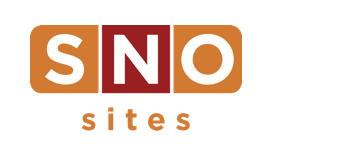SNO advisers share secrets to success
The dust has settled!
You finally know all your students’ names (hopefully), and they’re finally getting the hang of the publishing basics (hopefully).
So…now what? How can you take things up a notch and elevate your program to the next level?
To answer such lofty questions, we went directly to the source and reached out to a handful of SNO advisers from across the country to gather input. While their years of experience and school sizes vary, they’ve all managed to build successful student journalism programs, and they’ve all graciously shared their advice on how to do it.
Check out the first round of responses below, and keep an eye on your inbox for more throughout the next two weeks!
Lauren Graziano
Graziano has been advising student journalism for five years at Brunswick High School in Maryland. She teaches Journalism 1-4 (when possible), plus Creative Writing 1-4. She also runs a literary magazine.
SNO Website: Garnet & Gold Gazette
Q: What would you say is the “secret to success” in running a student journalism program?
A: I’ve found the secret to success is simply allowing kids a space to share their voices in writing. I’ve seen their advocacy for their work become so prized and that pride is the secret to success for me; it’s contagious.
Q: What advice would you give to a brand new adviser?
A: I think it’s very easy to be overwhelmed with running an online site at first and my advice would be to start small. I started with simple teacher feature articles to win over some staff and student interest, and they’ve always been the foundation of our news site. It’s a great way to start the year, semester, and meet new people in our community. Then take it day by day. I’ve found organizing the month with similar planning structure helps me and the students stay on task and it keeps all of us more accountable.
Q: What’s your favorite SNO feature?
A: This is a hard one. I think my favorite SNO feature is linking stories at the bottom of articles for connected content or series episodes for podcasts. It’s a nice way to get more views and have readers and listeners continue to interact in an easy and effortless way with the content. I also think it looks really nice.
Glenn Krake
Krake teaches four photography 1-2 classes that feed into both Yearbook and Journalism publications classes at West Linn High School in Oregon. Krake has been in the student journalism world for quite some time. In addition to advising student publications for 20 years, he was also editor-in-chief for his high school and university newspapers.
SNO Website: wlhsNOW
Q: What would you say is the “secret to success” in running a student journalism program?
A: The secret key to success is to let the students do the work. Give them ownership. They will rise to the occasion. I have to remind them I am their adviser; not their editor. Set them up to take responsibility and give them space to pave the way.
Q: What advice would you give to a brand new adviser?
A: Stick with it. Building a program is just that: building. It takes several years to invest in processes and to implement systems that will pay dividends down the road. Get involved in your local press association. Ask for help from another adviser. Attend a convention. Those are the things that will help build your program.
Q: What’s your favorite SNO feature?
A: My absolute favorite SNO feature is their Badge Reward System. My students set a goal of getting as many of the SNO Badges as possible as early and often as they can. If they’re making progress on those, I know they’re producing quality content and are working towards publication best practices. One year, my staff was the first of only three schools nationally to receive the “Distinguished Sites” badge and they walked around the national convention like they were rock stars. They were so proud of that achievement. It was a great boost to their confidence as journalists. They celebrate every time they publish now and get extra excited when their articles get selected as “Best of SNO.” They love celebrating those tangible successes.
Adriana Chavira
Chavira teaches four sections of a journalism class titled “Intro to Publications Design and Multimedia” – which produces the yearbook, news website, and twice monthly news magazine – as well as a class called “Digital Photo Design.” Chavira has been advising student media for 19 years, 17 of which have been at her current school, Daniel Pearl Magnet High School, in California.
SNO Website: The Pearl Post
Q: What would you say is the “secret to success” in running a student journalism program?
A: I think there are several “secrets to success” in running a student journalism program. You have to be flexible and let the students decide what they will cover in their publications. You have to have a passion for journalism. As a former newspaper reporter, I live and breathe the news and I try to bring that passion into the classroom. Don’t be afraid of letting your students cover the hard stuff. Students thrive when they are covering hard news or in-depth stories. Don’t only recruit students who are the “AP kids” into your publications class. If students are enthusiastic about journalism, let them join your publications. I can teach students how to write and take photos. But I can’t teach them to be enthusiastic. That has to be intrinsic.
Q: What advice would you give to a brand-new adviser?
A: Join scholastic journalism organizations, whether at the national, state and local level. The Journalism Education Association has definitely improved my skills as an adviser. I’m always learning something new from the other advisers I meet through this organization. I’m president of the Southern California JEA and want to make sure that new advisers get the support they need.
Q: What’s your favorite SNO feature?
A: My students love Best of SNO. Even if I tell them they did well on a particular story, getting that certificate from SNO and the badge at the top of their story means so much to the students.

